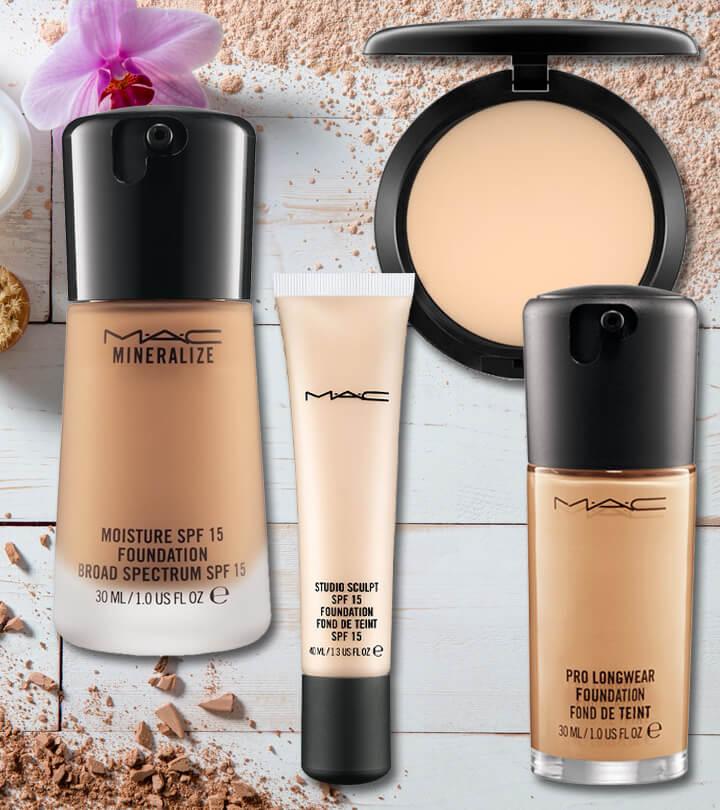
Mac foundation shades for dark skin how to#
'Women of colour are being left out of the conversation' HOW TO COLOUR MATCH FOUNDATION TO DARKER SKIN TONES They're aimed at replicating Western standards of beauty, so often you can end up with the same muddy coloured foundation that leaves your skin looking flat and two dimensional. Techniques used to colour match foundation are very much geared towards Caucasian skin tones. If you go into a department store, the vast array of products on display is dazzling, but trying to explain your needs as a woman of colour is tricky at best. Shopping for make-up should be a fun experience, but for many BAME women, it can be stressful and down right expensive.

That said, while there is more variety to choose from than ever before, the advice Black and Asian consumers will get on how to choose foundation for their skin tones is still stuck in the days of skinny eye brows. Thankfully make-up brands have finally realised that skin doesn't just come in 50 shades of beige. It's for brands to prove that they are up to the task if they want to survive.In the past, it seemed like foundation only looked natural if your skin tones were a similar shade to Kate Middleton's nude stilettos circa 2015. Why are beauty brands so clueless about this? Where does the client with dark skin go? Why are there five light shades and only one dark shade in a foundation range launched by a brand worth billions? At some point, a consumer gets tired of complaining and looks elsewhere, trusting those companies which truly keep people of all skin tones in mind. Our skin tone doesn’t go as dark as “wheatish” and end there.
Mac foundation shades for dark skin tv#
Still, in India, there are loads of brands which have failed to understand their market and cater to the numerous skin tones the people in this country have.Ĭontrary to popular belief, most Indians don’t have light skin tones like the actresses on TV and in films. Internationally, women of colour like Jackie Aina and Deepica Mutyala are vocal about colourism in the beauty industry, causing many brands to wake up and realise their folly. Today, consumers don’t wish to waste their time with such brands. For ages, we’ve gone to these makeup kiosks in malls and been disappointed by the selection of pale shades presented to us. So, when other historically exclusionist brands suddenly try to jump on the inclusivity train now, thinking it’s some kind of a trend, not many want to go there because we never associated them with inclusivity in the first place. As a result, we have come to associate them with inclusivity.

For decades, these have been the beauty brands from which we have not returned disappointed for lack of a shade range. That is why even today, people go to a M.A.C or a Lancôme and wear an Estee Lauder Double Wear. As consumers though, we have realised who really wants to cater to us, because we have seen which brands actually carry the shades we need. For a long time, certain brands have excluded people of colour, only to realise in the past few years that we too, are a huge market. We see the difference.īut it doesn’t fool us.

Today, other established brands jumping on to the inclusivity bandwagon want to get away with making money while doing very little. Fenty launched their brand with 40 shades of foundation and then expanded to 50, with an intent to be inclusive. In the eyes of the public, there’s a huge difference between names like Fenty Beauty and other brands which never had a wide shade range. When a big brand doesn’t have an inclusive shade range, especially in a country like India where most people are not light-skinned, it makes us feel excluded. When you have the resources to launch new products every month, but don’t want to invest in making shades for darker skin, you’re making a choice to leave out certain people with a certain skin colour.

It’s one thing for a small brand with very little capital to begin with a small foundation range, and another for huge conglomerates to launch foundations which either come in eight shades, or are 50 shades of beige. To all the big brands who operate under the assumption that everyone is a shade of pale pink,ĭo you think those of us with darker, warmer, non-white skin don’t deserve to be your clientele? If that’s not the case, why aren’t you inclusive? Why don’t you factor in various shades while making a foundation range? Why is it that you add one dark foundation shade to your range like people with dark skin are an afterthought?


 0 kommentar(er)
0 kommentar(er)
